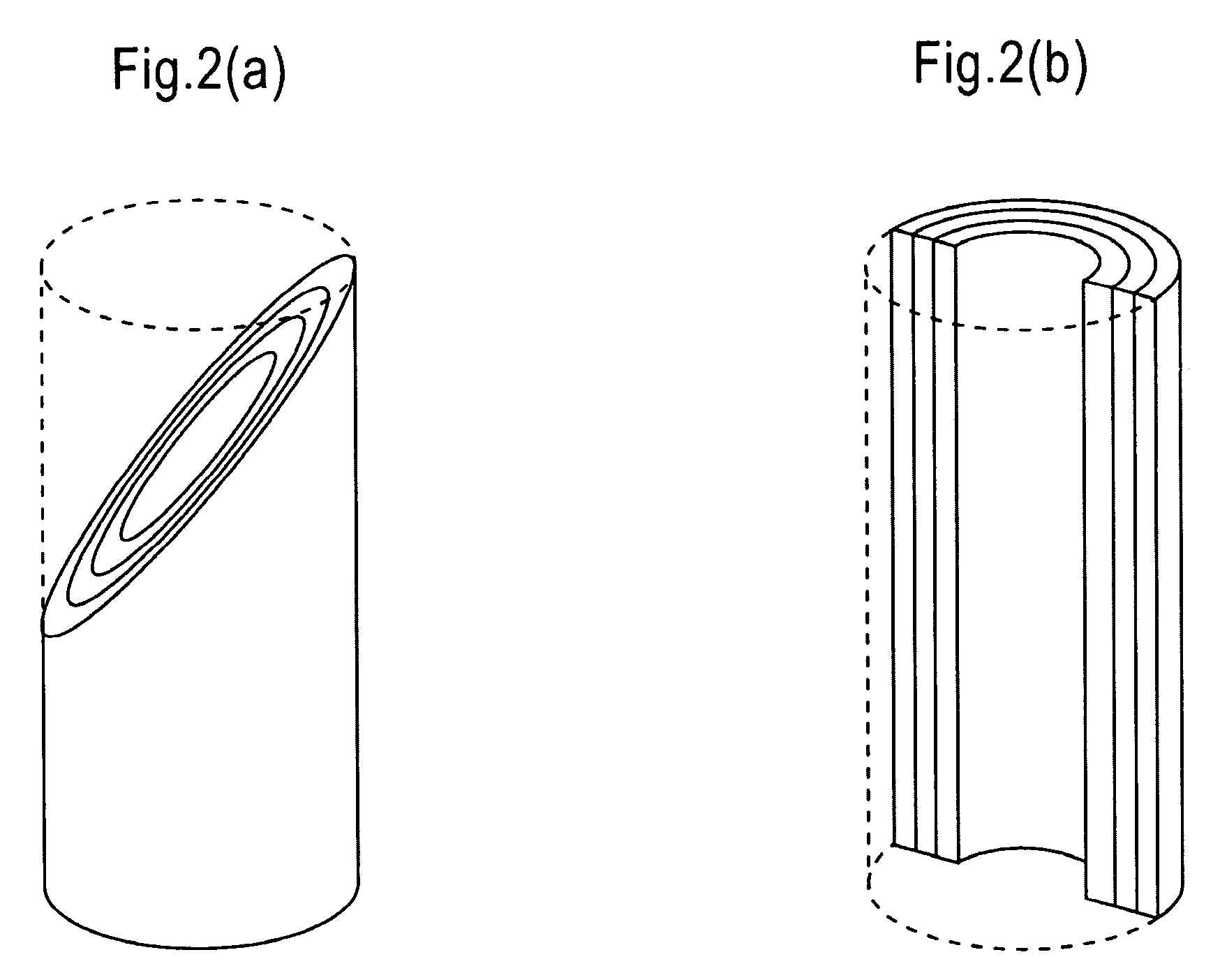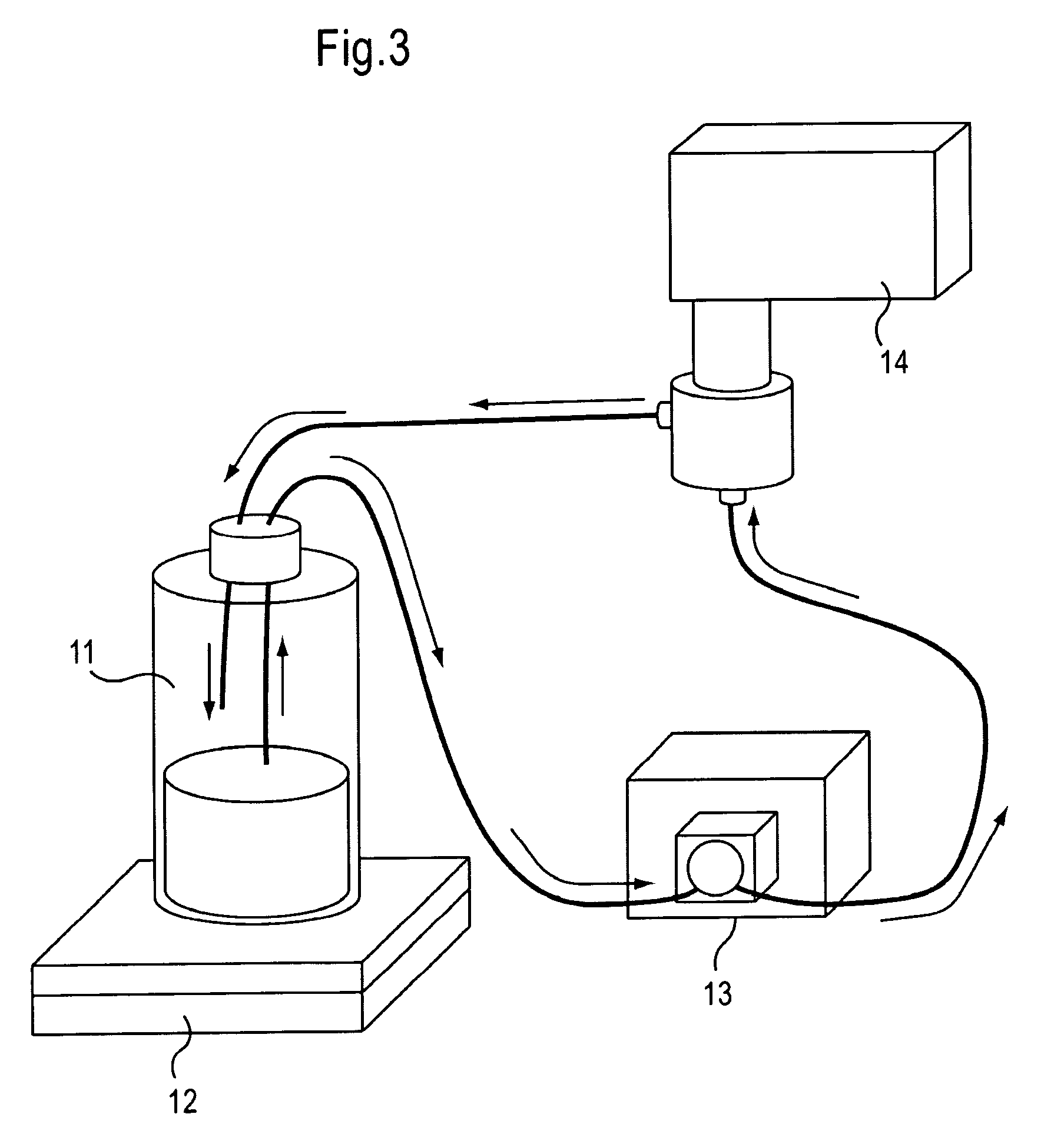Heat transport medium
a technology of heat transport medium and metal system nanometric particles, which is applied in the direction of transportation and packaging, mixing, chemical instruments and processes, etc., can solve the problems of reducing the amount of heat release, preventing the improvement of heat conductivity, and severely increasing the kinetic viscosity of liquids, so as to improve heat conductivity, improve the dispersibility of carbon nanotubes, and suppress the effect of increasing the kinetic viscosity
- Summary
- Abstract
- Description
- Claims
- Application Information
AI Technical Summary
Benefits of technology
Problems solved by technology
Method used
Image
Examples
example 1
[0032]Ultrapure water produced using a pure water production system (“MILLI-Q-LABO”, trade name; manufactured by Nihon Millipore K.K.) was weighed and filled as a base liquid in the vial container 11. As shown in Table 1, carboxymethylcellulose sodium (“CMC DICEL”, trade name, product of Dicel Chemical Industries, Ltd.; model No.: 1102; average molecular weight: 25,000) was weighed to give 10 wt % and was added to the vial container 11. The resulting fluid was stirred for 60 to 120 minutes by a magnetic stirrer (“CERAMAG-MIDI”, trade name; manufactured by IKA Works U.S.A).
[0033]Specific carbon nanotubes (“CARBERE”, trade name for cup stack carbon nanotubes, product of GSI Creos Corporation; outer diameter: 100 nm, length: 10 μm) were weighed to give 15 wt % and were added to the fluid in the vial 11. It is to be noted that the above-described cup stack carbon nanotubes had the length distribution shown in FIG. 4, and had a number average length (Ln) of 8.20 μm, a weight average leng...
example 2
[0036]A heat transport medium was produced in a similar manner as in Example 1 except that, as shown in Table 1, the content of the specific carbon nanotubes was changed to 10 wt % and the content of carboxymethylcellulose sodium was changed to 5 wt %.
example 3
[0037]A heat transport medium was produced in a similar manner as in Example 1 except that, as shown in Table 1, the content of the specific carbon nanotubes was changed to 3.6 wt % and the content of carboxymethylcellulose sodium was changed to 4 wt %.
PUM
| Property | Measurement | Unit |
|---|---|---|
| Length | aaaaa | aaaaa |
| Electrical conductivity | aaaaa | aaaaa |
| Viscosity | aaaaa | aaaaa |
Abstract
Description
Claims
Application Information
 Login to View More
Login to View More - R&D
- Intellectual Property
- Life Sciences
- Materials
- Tech Scout
- Unparalleled Data Quality
- Higher Quality Content
- 60% Fewer Hallucinations
Browse by: Latest US Patents, China's latest patents, Technical Efficacy Thesaurus, Application Domain, Technology Topic, Popular Technical Reports.
© 2025 PatSnap. All rights reserved.Legal|Privacy policy|Modern Slavery Act Transparency Statement|Sitemap|About US| Contact US: help@patsnap.com



